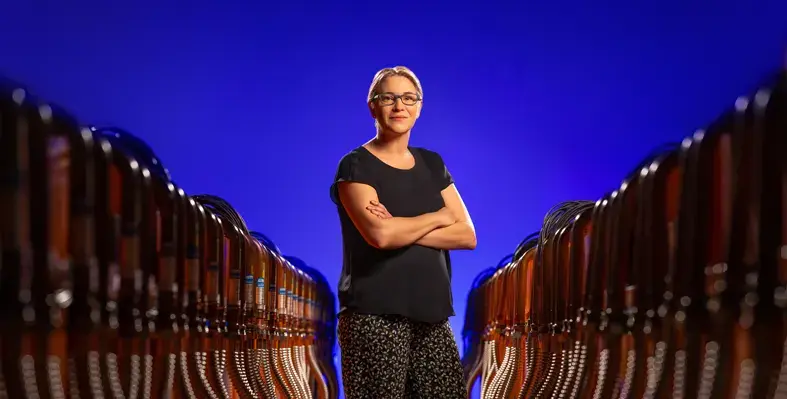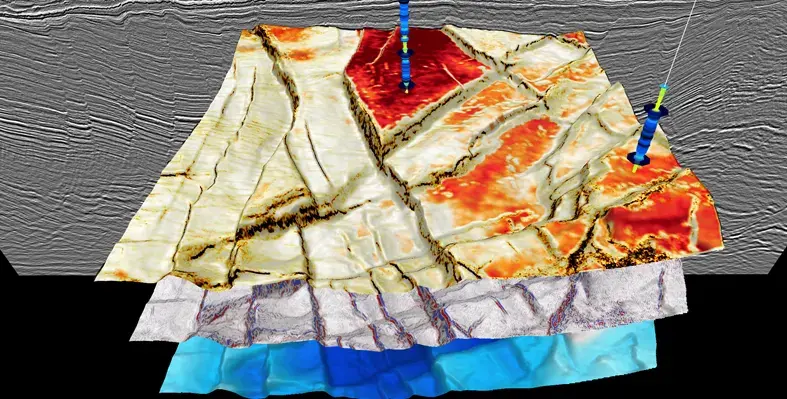MARGARITA KONGAWOIN, global business development manager (Software & HPC) of DUG Technology, discusses DUG Insight, the company’s modern software solution for all things seismic, and its role in the Middle East
Can you give us a little background on DUG Insight and its role?
DUG Insight is our complete solution for interpretation, visualisation, 2D/3D/pre-stack/time-lapse amplitude analysis and rock-property inversion, advanced seismic-data time-processing and depth-imaging, and full waveform inversion (FWI). It includes our revolutionary elastic multi-parameter FWI imaging technology – a complete replacement for the traditional seismic processing, imaging and QI workflow.
For over 20 years DUG has been dedicated to solving geoscience challenges through innovation, with software and R&D at the heart of our journey. In the early days, limited capital motivated us to be resourceful – so we wrote our own seismic processing and interpretation software for internal use. Clients saw it, loved it, wanted it, and so DUG Insight was born! We’ve been licensing it since 2009, and today it’s used in 35 countries. Importantly, our geoscientists rely on it daily, which is key to its success – our clients benefit from the same high-end technology we developed for ourselves!
What benefits does DUG Insight offer in terms of functionality and flexibility?
Modern interpretation workflows need modern software. Insight is built on DUG’s core principles for technology: reliability, efficiency, scalability and ease-of-use. It provides best-in-class functionality and support for our clients, spanning collaborative cloud and on-premises solutions. Hardware and IT should be invisible to users – so they can focus entirely on geoscience. Featuring an intuitive, interactive interface, Insight automates labour-intensive tasks and enables a seamless, productive user experience, while encapsulating project configuration and operation within a consistent workspace.
With flexible licensing and leasing, including maintenance and upgrades, Insight is backed by responsive, round-the-clock technical support and R&D teams, ensuring the latest functionality - for both interpretation and imaging, is always at the user’s fingertips.
How do you view your prospects for DUG Insight in the Middle East?
We have built long-standing relationships through years of involvement in local projects. Our recent office-opening in Abu Dhabi marks an exciting milestone. This new base allows us to work even closer with our clients, better understand their needs, and provide hands-on support.
Insight is inherently scalable, which is particularly relevant in the Middle East. The software is designed to handle huge data volumes and modern acquisition – whether a mega-merge, a massive OBN survey or an ultra-high-density, on-shore project. We’ve processed single surveys and multi-survey merges with input trace counts in the hundreds of billions, covering areas spanning tens of thousands of square kilometres, both onshore and offshore.
Could you give us a glimpse into your recent R&D efforts?
End-users should be 100% focused on geoscience, including interpretation, parameterisation, analysis and QC. We have several R&D initiatives that are particularly relevant to the Middle East.
Our exceptional R&D team continues to deliver high-end solutions for seismic interpretation and processing & imaging. We’ve recently developed a ground roll attenuation algorithm that utilises machine learning, building on our swell-noise attenuation work which uses similar technology. We’re also developing a new approach to land statics and are excited to showcase it in this region.
We recently introduced our latest processing and imaging solution: DUG Elastic MP-FWI Imaging. Using superior physics, it removes the assumptions and approximations of both traditional processing and imaging and quantitative interpretation workflows. It solves for three-component (directional and AVA) reflectivity, Vp, Vs, P-impedance, S-impedance and density, delivering unsurpassed results in shorter timeframes. It delivers not only another step change in imaging quality but also elastic rock properties for quantitative interpretation. We believe this is the new standard – stay tuned for more results this year!
DUG Insight tackles seismic challenges with ease

MARGARITA KONGAWOIN, global business development manager (Software & HPC) at DUG Technology. (Image source: DUG)









